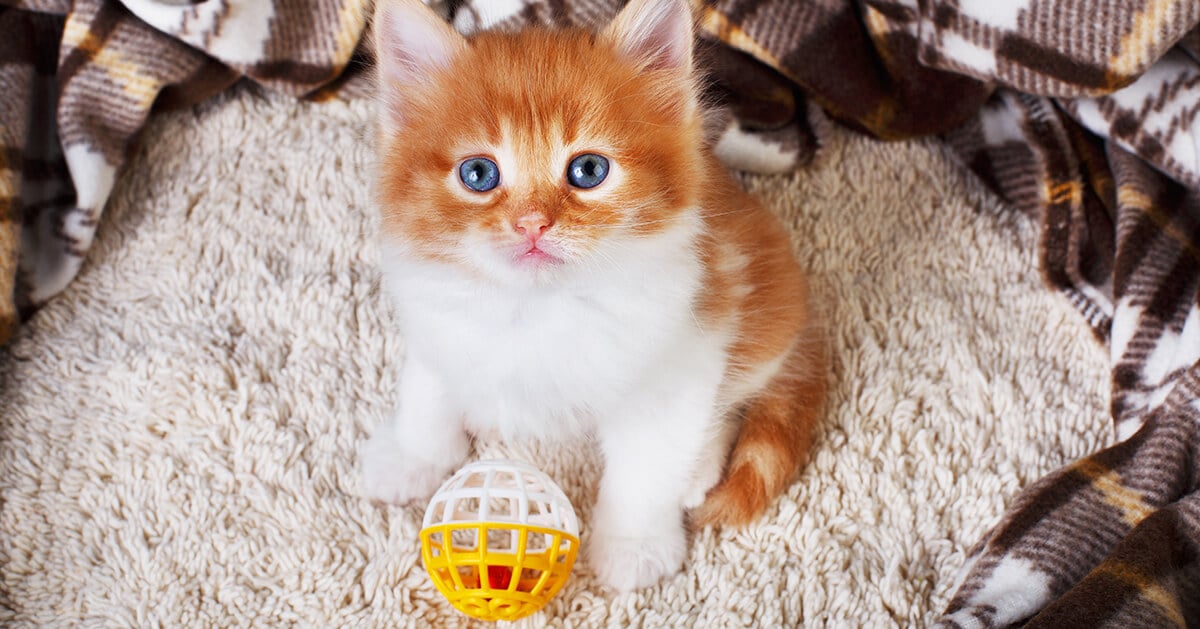How to Train a Kitten & What Your Kitty Needs to Learn!
Contrary to common belief, kittens can be trained! Cats are very intelligent and, although independent, they love to interact with humans and will follow commands, especially if taught from an early age - it’s best to should start kitty training as soon as you bring them home!
How to Train a Kitten & What Your Kitty Needs to Learn!
Training helps your cat remain both physically and mentally active! Plus, teaching and playing games with your kitty can be very rewarding - for both of you!
As with any animal training, reward is the key! The more often you praise and reward your kitten during training, the more likely they are to repeat the action on command. Food rewards work well to reinforce commands and a sense of fun, as does praising and fussing your kitty when they react positively!
Only ever train with positive, reward-based methods; never shout or react negatively towards your kitty if they don’t perform as you’d like. This will only scare them and they won’t want to play ball!
What Can I Train My Kitten To Do?
There are a number of things you can train your cat to do. For example, you can train them to:
● Come to you when called
● Sit or give a paw / kitty handshake!
● Be happy when inside the cat carrier - ideal for those times that you need to visit the vet or travel somewhere.
● Be great socialisers, and happy to interact with other people and animals
● Enjoy being a cuddly happy kitty, who is happy to be handled
● Plus other creative kitty training, such as playing fetch!

12 Tips For Top Kitty Training
Training a cat is all about repetition, consistency, positivity and patience!
- Keep your training sessions short and only try to teach one trick at a time. They will get confused if you try to teach them lots of things at once, and may get bored if you persist for more than 10 minutes.
- Train your cat when they are a little hungry! This way they will be more likely to respond if there is a food or treat based reward!
- Whenever your cat obeys a command, give them a small treat! This way they will develop a positive association with the task.
- Keep your pet’s diet in mind! Be careful not to overfeed your cat with treats! If your kitten or cat has dried food, a nice trick is to use some of their daily food allowance as a training treat. They won’t miss a few nuggets from their bowl when it comes to feeding time, and you will know that they’re not being overfed!
- Repeat training exercise over and over (and over time), using the same commands all the time.
- Use a soft encouraging voice and make a fuss of your kitty when they get it right by praising them and stroking them. This way your pet will also get used to being handled - after all we all like kitty cuddles!
- Never punish your kitty if they don’t understand straight away - be patient and try again another time using the same tactics. If you shout or punish your pet, they will get scared and their association with you and the training will be the opposite of what you want to achieve!
- Some people find that using a clicker works well. If you use your cat’s name, click and then reward every time they respond they will soon make the right association. This method can be used for training your cat to sit when asked or coming to you when called.
- For carrier training, encourage your cat to enjoy their travel carrier as soon as you bring them home. It’s important that they become used to going inside the carrier without getting stressed. Placing food inside the cat carrier - with the door open, and just keeping it where it is - will help your kitty see it as a safe and familiar place. This way, when you need to take your pet on a journey, they will be used to the carrier and travel willingly.
- Handling your kitten can be a little tricky to start with, as they may not like an over-enthusiastic hug, or may be wary of strangers or children picking them up. Be gentle and practice for short periods, with different ways of holding them. Never force your kitten to stay in your arms or lap. If they are free to jump away when they want to, they will be more likely to return again, on their own terms. Importantly, make sure that other people know how to handle them as well!
- You want your kitty to be sociable, so get them used to different sounds, animals and situations as soon as you can. If you already have another pet in the house , make the introductions very slowly, sometimes through a window, or partially open door works best, so that they recognise each other when they come face to face. Monitor and supervise introductions very closely and be prepared to step in if they don’t take to each other straight away - after a few short meetings, they very often learn to live in harmony!
- Train your cat to use a scratching post instead of your furniture. This will save a lot of anxiety and give your new kitten their own space that they can enjoy.

Start training your kitty at a very early age and you’ll soon reap the rewards of having a loving, furry bundle around the home.
To encourage the learning process, using a FELIWAY CLASSIC Diffuser will help your kitty feel more at ease. FELIWAY CLASSIC releases comforting messages, and is scientifically proven to create a calm and reassuring environment, perfect for new situations and training!
Travel Tips
Travelling With a Cat - Carrier
How to Introduce Cats to Each Other
